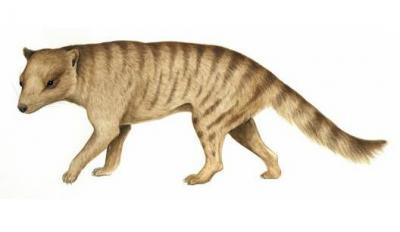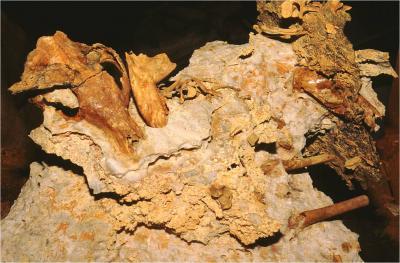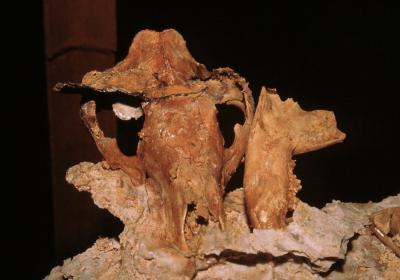The reconstruction of an extinct meat-eating marsupial's skull, Nimbacinus dicksoni, suggests that it may have had the ability to hunt vertebrate prey exceeding its own body size, according to results published April 9, 2014, in the open access journal PLOS ONE by Marie Attard from the University of New England together with colleagues from the University of New South Wales.
Nimbacinus dicksoni is a member of an extinct family of Australian and New Guinean marsupial carnivores, Thylacinidae. Aside from one recently extinct species, the majority of information known about species in this family stems from recovered skull fragments, which limits species ecology and diversity analysis. Scientists recovered a ~16-11.6 million year old preserved skull of N. dicksoni from the Riversleigh World Heritage Fossil Site in northwestern Queensland, Australia, and used it to determine if N. dicksoni was more likely to hunt small or large prey. They applied virtual 3D reconstruction techniques and computer modelling to reconstruct the skull of Nimbacinus, digitally 'crash-testing' and comparing it to models of large living marsupial carnivores (Tasmanian devil, spotted-tailed quoll and northern quoll), and to the recently extinct Tasmanian tiger, N. dicksoni's close relative.

This is an illustration of Mid Miocene Nimbacinus dicksoni.
(Photo Credit: Anne Musser)
The authors found that the similarity in mechanical performance of the skull between N. dicksoni and the largest quoll, the spotted-tailed quoll, was greater than the similarity to the Tasmanian tiger. The authors suggest that N. dicksoni, a medium-sized marsupial (about 5 kg), had a high bite force for its size, was predominantly carnivorous, and was likely capable of hunting vertebrate prey that exceeded its own body mass.
"Our findings suggest that Nimbacinus dicksoni was an opportunistic hunter, with potential prey including birds, frogs, lizards and snakes, as well as a wide range of marsupials. In contrast, the iconic Tasmanian tiger was considerably more specialized than large living dasyurids and Nimbacinus, and was likely more restricted in the range of prey it could hunt, making it more vulnerable to extinction." Dr Attard explains.

This is a photo of Mid Miocene Nimbacinus dicksoni from Riversleigh half exposed from limestone.
(Photo Credit: Anna Gillespie, University of New South Wales)

This is a photo of Mid Miocene Nimbacinus dicksoni skull and dentition emerging.
(Photo Credit: Anna Gillespie, University of New South Wales)
Source: PLOS